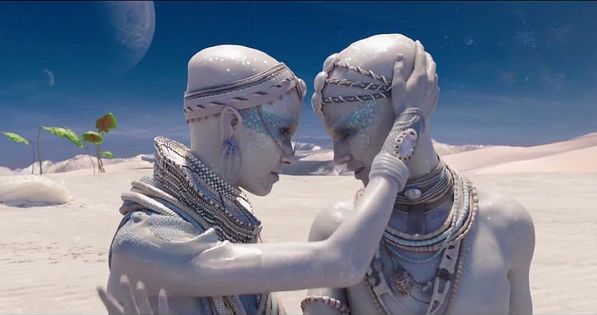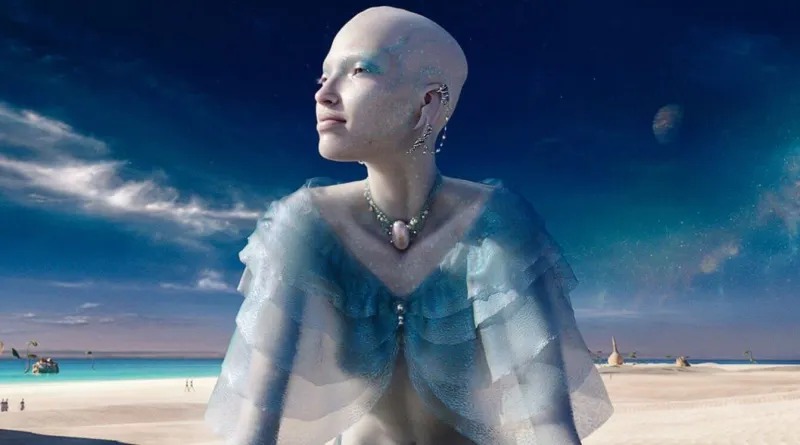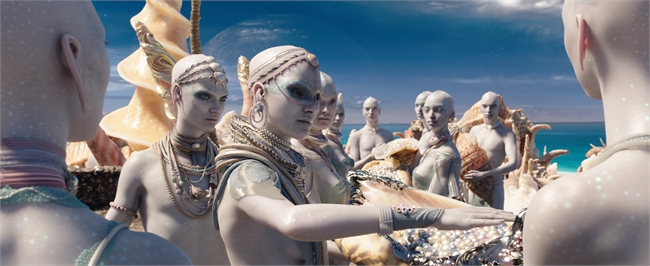Valerian and the City of a Thousand Planets (2017)

“Valerian and the City of a Thousand Planets” (2017), directed by Luc Besson, is a visually stunning science fiction film that adapts the classic French comic series “Valérian and Laureline” created by Pierre Christin and Jean-Claude Mézières. The film blends vibrant visuals, imaginative world-building, and action-packed sequences to create an ambitious and visually rich cinematic experience.
Set in the 28th century, the film follows Major Valerian (Dane DeHaan) and Sergeant Laureline (Cara Delevingne), special operatives for the human government tasked with maintaining order throughout the universe. The story begins with the discovery of a mysterious energy source in the heart of Alpha, a vast space station known as the City of a Thousand Planets, where diverse species from across the galaxy coexist in harmony.

As Valerian and Laureline investigate the threat to Alpha and its inhabitants, they uncover a conspiracy that threatens the entire universe. Along the way, they encounter a variety of alien species, navigate elaborate virtual environments, and confront formidable adversaries, all while trying to unravel the mysteries surrounding the energy source and protect those they care about.
One of the film’s standout features is its visual effects and production design. Luc Besson’s vision brings to life a universe filled with vibrant colors, intricate alien cultures, and futuristic technology. The design of Alpha, with its sprawling metropolis of diverse habitats and bustling alien markets, is particularly impressive. The film’s CGI and practical effects seamlessly blend to create a visually immersive world that feels both fantastical and believable.

The action sequences in “Valerian” are exhilarating and creatively choreographed, showcasing Valerian and Laureline’s skills as skilled operatives. From gravity-defying chases through interdimensional portals to underwater adventures in alien environments, each set piece is visually dynamic and contributes to the film’s sense of adventure and excitement.
Dane DeHaan and Cara Delevingne deliver solid performances as Valerian and Laureline, respectively. DeHaan captures Valerian’s cocky charm and determination, while Delevingne brings strength and wit to Laureline’s character. Their banter and chemistry drive the film’s narrative, adding humor and depth to their partnership.

The supporting cast includes notable performances from Clive Owen as Commander Arün Filitt, Ethan Hawke as Jolly the Pimp, and Rihanna as Bubble, a shape-shifting entertainer. Each character brings a unique dynamic to the story, adding layers of intrigue and emotion to the film’s ensemble.
“Valerian” explores themes of unity, cooperation, and the consequences of unchecked power. The film emphasizes the importance of understanding and respecting different cultures and species, as exemplified by the diverse inhabitants of Alpha. It also raises questions about environmental stewardship and the ethical use of technology, particularly in relation to the energy source that drives the film’s plot.

While “Valerian” is visually stunning and ambitious in scope, it received mixed reviews upon its release. Some critics praised its creativity and visual effects, while others found fault with its pacing, narrative complexity, and character development. The film’s nonlinear storytelling and episodic structure may also pose challenges for viewers expecting a more straightforward plot.
Overall, “Valerian and the City of a Thousand Planets” is a visually dazzling and imaginative sci-fi adventure that celebrates the spirit of exploration and discovery. Luc Besson’s passion for the source material shines through in every frame, creating a cinematic experience that is both visually captivating and thematically ambitious. Despite its narrative flaws, the film remains a testament to the power of imagination and creativity in the science fiction genre.